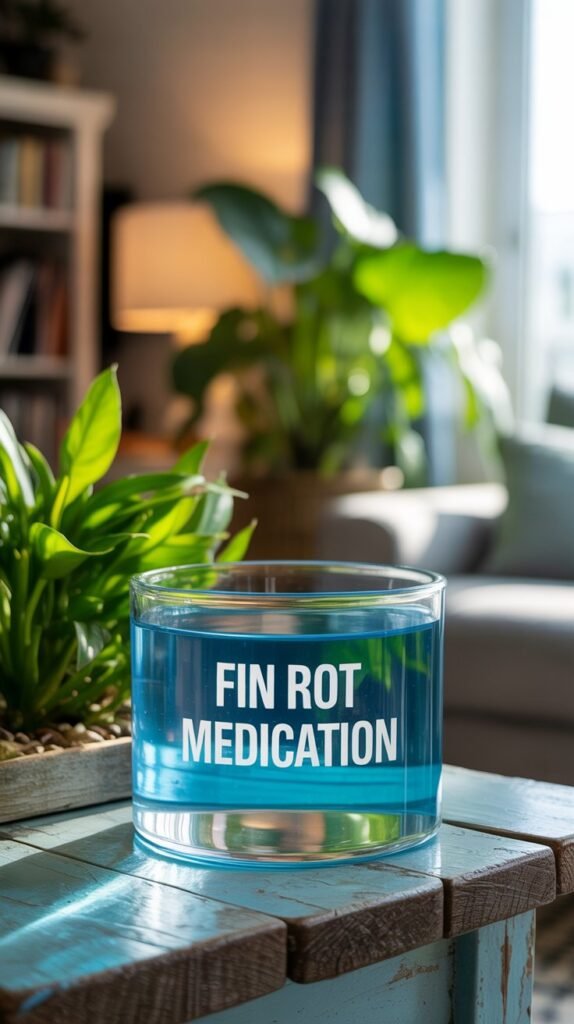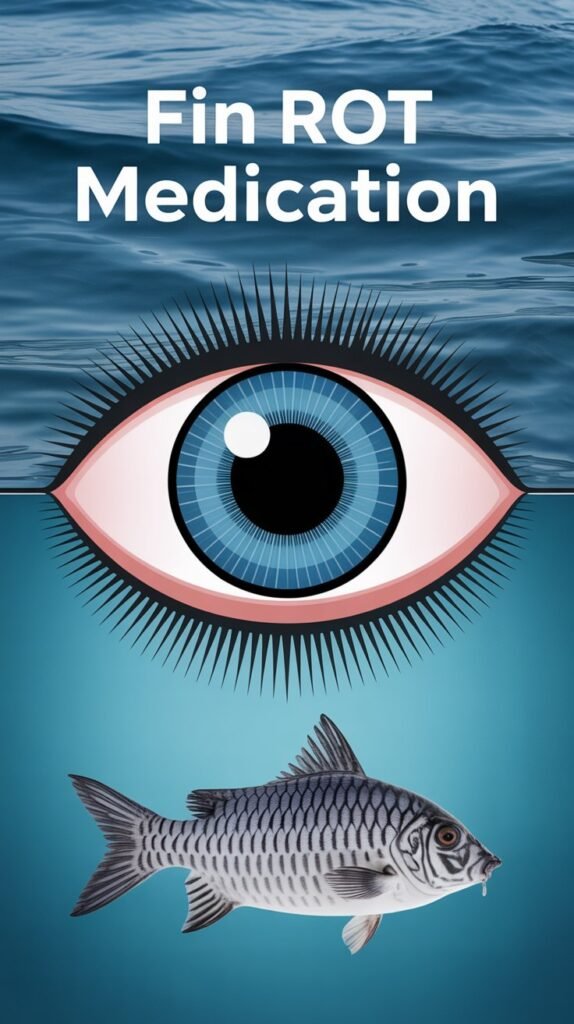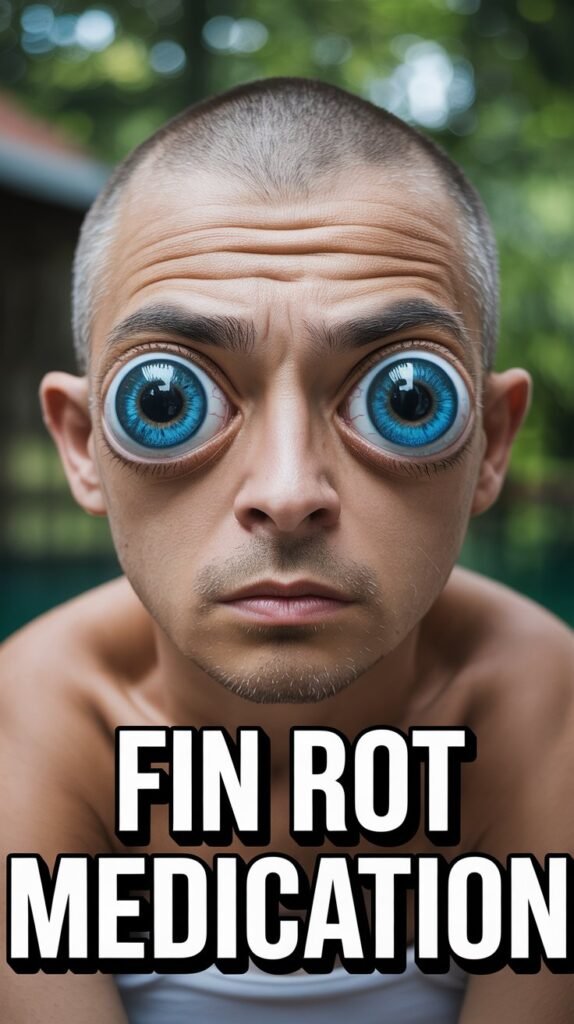Fin rot is one of the most common aquarium diseases and a major concern for fish keepers worldwide. This condition is usually caused by bacterial or fungal infections, often triggered by poor water quality, stress, or injuries. While early detection and water improvement can sometimes reverse mild cases, fin rot medication is often necessary for moderate to severe infections.
In this comprehensive guide, we’ll explore everything about fin rot medication—how it works, when to use it, the best treatment options, natural remedies, step-by-step instructions, and how to prevent reoccurrence after treatment.
What Is Fin Rot?
Fin rot is a progressive disease that attacks the fins and tails of fish. It usually starts with fraying, discoloration, or ragged edges and can lead to complete fin erosion if untreated.
Causes of Fin Rot:
- Bacterial infection (e.g., Aeromonas, Pseudomonas, Vibrio)
- Fungal infection (appears as cotton-like growths on fins)
- Poor water quality (ammonia, nitrite, nitrate spikes)
- Aggressive tankmates (nips and injuries leading to infections)
- Stress and weak immunity (from temperature swings, poor diet, or overcrowding)
Why Medication Is Needed:
- Fin rot does not heal on its own once infection sets in.
- Advanced fin rot can cause systemic infections leading to death.
- Proper medications kill bacteria and fungus, allowing fins to regenerate.
When Should You Use Fin Rot Medication?

Not all cases require heavy medications. Knowing when to use them helps avoid unnecessary stress on fish.
Mild Cases (Early Stage):
- Symptoms: Slight fraying, discoloration, or dull fins.
- Treatment: Often reversible with clean water, aquarium salt, and stress reduction.
Moderate Cases:
- Symptoms: Noticeable fin loss, white edges, cloudy appearance.
- Treatment: Antibacterial or antifungal medications recommended.
Severe Cases:
- Symptoms: Fins almost gone, ulcers, open wounds, lethargy, refusal to eat.
- Treatment: Immediate use of strong medication in a hospital tank.
Types of Fin Rot Medication
There are several categories of fin rot medication, each with different functions.
1. Antibacterial Medications
Used for bacterial fin rot, which is the most common type.
- Maracyn (Erythromycin) – Effective against gram-positive bacteria.
- Kanaplex (Kanamycin) – Works on gram-negative bacteria, very strong.
- Furan-2 – Broad-spectrum antibiotic, good for mixed infections.
- API Melafix – Natural antibacterial derived from tea tree oil, mild but useful in early cases.
How to Use:
- Follow the manufacturer’s dosing instructions.
- Use in a hospital tank if possible to avoid harming beneficial bacteria.
- Combine with frequent water changes for best results.
2. Antifungal Medications
For fungal infections or mixed infections.
- Methylene Blue – Widely used antifungal and antibacterial.
- API Fungus Cure – Designed specifically for fungal infections.
- Aquarium Salt (NaCl) – Prevents secondary fungal infections and reduces stress.
How to Use:
- Antifungal meds are often combined with salt baths for quick recovery.
- Apply only in quarantine tanks to prevent staining main display tank.
3. Broad-Spectrum Medications
Target both bacteria and fungi at the same time.
- Seachem Paraguard – Effective against bacterial and fungal infections.
- Jungle Fungus Clear – Treats both infections in tablet form.
- Copper-Based Medications (for marine fish) – Effective against multiple pathogens but must be used with caution.
4. Natural and Herbal Medications
Best for mild infections or as preventive measures.
- Indian Almond Leaves (Catappa leaves) – Release tannins with antibacterial properties.
- Garlic Extract – Strengthens immunity and encourages appetite.
- Aloe Vera-Based Medications – Heal wounds and reduce stress.
How to Use Fin Rot Medication: Step-by-Step

Treating fin rot effectively requires more than just adding medication. Here’s a structured treatment process:
Step 1: Diagnose the Infection
- Look for ragged, frayed, or discolored fins.
- Check if multiple fish are affected (indicates water issue).
- Rule out fin nipping injuries.
Step 2: Prepare a Hospital Tank
- Set up a separate tank with clean, conditioned water.
- Maintain stable temperature (75–82°F for tropical fish).
- Add gentle filtration and aeration.
Step 3: Improve Water Quality
- Test ammonia, nitrite, nitrate levels.
- Perform 25–50% water changes.
- Vacuum substrate to remove waste.
Step 4: Administer Medication
- Use the recommended dose (never overdose).
- Some medications require daily dosing, others every few days.
- Remove activated carbon from filters (it absorbs medication).
Step 5: Supportive Care
- Feed vitamin-rich foods to strengthen immunity.
- Add aquarium salt if species can tolerate it.
- Keep stress low (no overcrowding, stable conditions).
Step 6: Monitor Recovery
- Early improvement: fins stop deteriorating.
- Long-term recovery: new fin tissue grows (clear/transparent edges first).
- Full regrowth may take weeks.
Side Effects and Precautions
While medications are essential, misuse can harm your fish or aquarium.
- Do not overdose – Too much medication stresses or kills fish.
- Watch sensitive species – Scaleless fish (catfish, loaches) are sensitive to salt and meds.
- Preserve Beneficial Bacteria – Antibiotics may kill nitrifying bacteria, causing ammonia spikes.
- Avoid Mixing Medications – Unless directed, don’t use multiple strong meds at once.
Preventing Recurrence After Medication
Medications treat the infection but won’t prevent it from returning if underlying causes remain.
Key Prevention Steps:
- Perform weekly water changes (25–30%).
- Avoid overfeeding and remove uneaten food.
- Keep tankmates compatible—avoid fin-nippers.
- Quarantine new fish for 2–4 weeks.
- Provide a nutritious, varied diet.
- Monitor fish daily for early signs of stress or disease.
Natural Alternatives vs. Medications
Some aquarists prefer natural methods to avoid strong chemicals. But which is better?
| Natural Remedies | Medications |
|---|---|
| Gentle, stress-reducing | Strong, fast-acting |
| Best for mild cases | Necessary for moderate-severe |
| Preventive, not curative | Can cure advanced fin rot |
| Safe for all fish | May harm sensitive species |
Conclusion: Use natural remedies for prevention or early cases. Use medications for moderate to severe infections.
Frequently Recommended Fin Rot Medications

Here’s a list of commonly used medications and their benefits:
- API Furan-2 – Strong broad-spectrum antibiotic.
- Maracyn (Erythromycin) – Excellent for bacterial fin rot.
- Kanaplex – Penetrates deeply into fish tissue.
- Methylene Blue – Great for fungus and mild bacteria.
- Melafix – Natural, mild antibacterial.
- Aquarium Salt – Supportive, inexpensive treatment.
FAQs on Fin Rot Medication
1. What is the best medication for fin rot?
For bacterial infections, Kanaplex and Furan-2 are highly effective. For fungal cases, Methylene Blue or API Fungus Cure works well.
2. Can fin rot be treated without medication?
Mild cases may heal with water changes, aquarium salt, and stress reduction. Moderate to severe cases require medication.
3. How long does fin rot medication take to work?
Improvement is usually visible within 5–7 days, but full fin regrowth can take 3–6 weeks.
4. Can I use multiple medications at once?
Not recommended unless directed by a vet. Mixing strong medications can harm fish.
5. Will fins grow back after fin rot?
Yes, in most cases fins regrow. New tissue appears clear at first, then regains color.
6. Is salt alone enough to cure fin rot?
For very mild infections, yes. For advanced infections, salt should be combined with proper medication.
7. Do I need to remove carbon filters during medication?
Yes. Activated carbon absorbs medications, making them ineffective.
Final Thoughts
Fin rot is one of the most treatable fish diseases if caught early. The right fin rot medication, combined with clean water and supportive care, can save your fish and restore their fins.
- For mild infections → focus on water quality and salt baths.
- For moderate to severe infections → use proven antibacterial or antifungal medications.
- For long-term prevention → maintain excellent water conditions and reduce stress factors.
By acting quickly and wisely, you can ensure your aquarium remains a thriving, disease-free environment where your fish live long, healthy lives.

